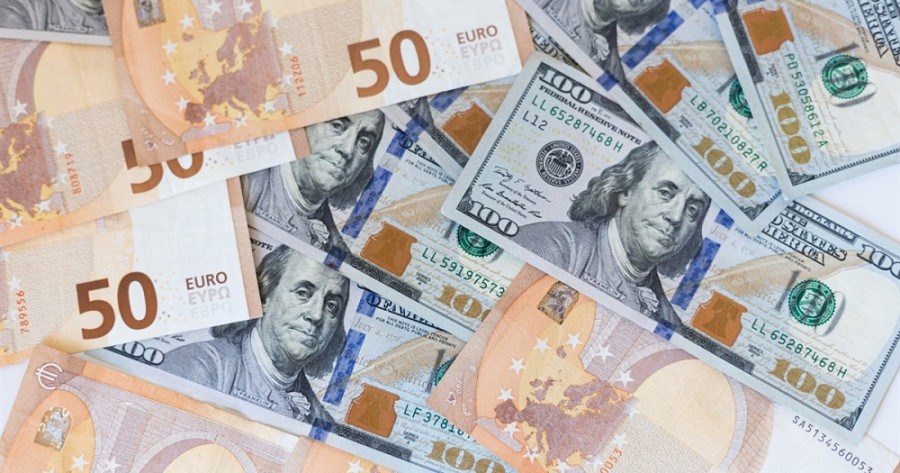At the end of the past week, the EUR/USD pair settled within the 9th figure but hesitated to storm the 10th price level. Signals from the head of the Federal Reserve and mixed Non-Farm Payrolls data helped EUR/USD traders shift the price range, which is preliminarily bounded by the levels of 1.0920 to 1.0990. However, a strong impetus is necessary for a breakthrough since the level of 1.1000 is a solid resistance level, a significant target. In this context, the upcoming week will play a decisive role. Depending on its outcome, the bulls will either maintain their advantage and consolidate around the 10th figure, or sellers will regain the initiative, pulling the pair back into the 8th figure. The focus is on the U.S. inflation reports in the coming days.

The key report of the week is the U.S. Consumer Price Index, scheduled for release on Tuesday. According to preliminary forecasts, on a monthly basis, the CPI is expected to rise to 0.4%, following an increase of 0.3% in the previous month. On an annual basis, the indicator is expected to remain at the same level as in January, at 3.1%.
However, the core CPI is expected to demonstrate a downward trend. On a monthly basis, it is projected to decrease to 0.3% (after rising to 0.4%), and on an annual basis, it is expected to drop to 3.7%. It is worth noting that the core CPI has consistently declined since March 2023, but in recent months, this trend has slowed down. In October and November 2023, it reached 4.0% YoY, in December and January, it stood at 3.9% YoY. The forecasted decline to 3.7% would mark a multi-month, or more precisely, multi-year low (the weakest growth rate since May 2021).
Another equally important inflation indicator will be released on Thursday, March 14. At the start of the US session, the Producer Price Index will be released. This report could provide support to the greenback if it meets expectations (or falls within the green zone). For the PPI, a monthly increase of 0.5% is expected, whereas in January, it stood at 0.3% (and was negative for three consecutive months before that). On an annual basis, the index is also expected to accelerate to 1.3% (the highest level since October of last year).
The core PPI, excluding food and energy prices, is expected to reach 2.1% on an annual basis. From October to December (inclusive), the indicator declined, reaching 1.7%, and in January, it accelerated to 2.0%.
Thus, the CPI may not work in favor of the greenback, while the PPI might support it (if, of course, the reports come in line with expectations).
The importance of these reports cannot be overstated. According to the CME FedWatch Tool, market participants are pricing a 60% chance of a U.S. rate cut in June. Fed Chairman Jerome Powell, speaking in Congress, hinted that the central bank is not going to delay policy easing: as soon as macroeconomic conditions permit, the central bank will lower the rate. The day after this statement, the February Nonfarm Payrolls were published, reflecting an increase in unemployment and a slowdown in wage growth. Moreover, the Labor Department revised employment figures downwards for previous months (a total of 167,000).
The labor market remains strong, but it seems to have stopped overheating. If this trend continues, the Fed could move towards a rate cut as early as June. Of course, if key inflation indicators move in a downward trajectory.
This is why the aforementioned reports are so important: they can confirm the market's assumptions that the first step towards a Fed rate cut will be taken in early summer. Or refute these assumptions, pushing the "X-hour" further into the future (July-September).
Take note that the market has already priced in the formal outcomes of the upcoming meetings scheduled for this month and May. However, the prospects for June are still uncertain. At the end of the past week, the probability of a rate cut in June increased, but the market is still full of doubts. Therefore, if inflation in February shows a slowdown (i.e., both reports end up in the red), the likelihood of a Fed rate cut in June will increase to 65-70%, and the dollar will come under pressure again. In this case, buyers may expect a breakthrough to the 1.10 level with subsequent test of the resistance level at 1.1070 (the upper line of the Bollinger Bands indicator on the weekly chart). If inflation unexpectedly accelerates, bears will regain control. In this scenario, the initial target for the downward movement will be the 1.0820 level (the middle line of the Bollinger Bands, coinciding with the Kijun-sen line on the daily chart).
Naturally, the upcoming week is filled with other fundamental events (for instance, we will learn about retail sales volume in the U.S. and industrial production volume). However, all other reports will play only a supporting role.
Inflation reports will either come to the aid of the greenback or become an anchor for it. There is no third option.
The material has been provided by InstaForex Company - www.instaforex.comfrom Forex analysis review https://ift.tt/gtsH8p1
via IFTTT
